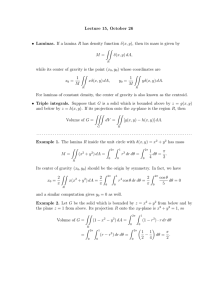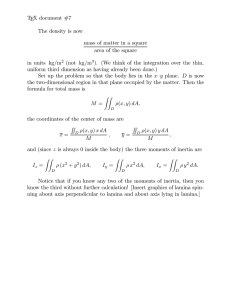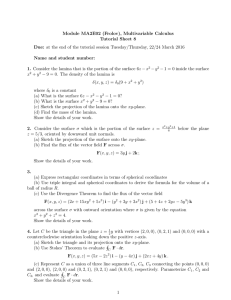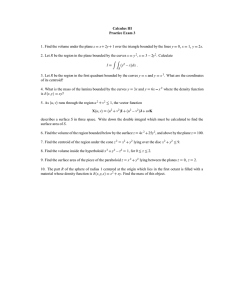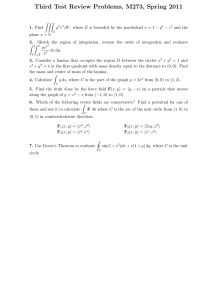δ
advertisement
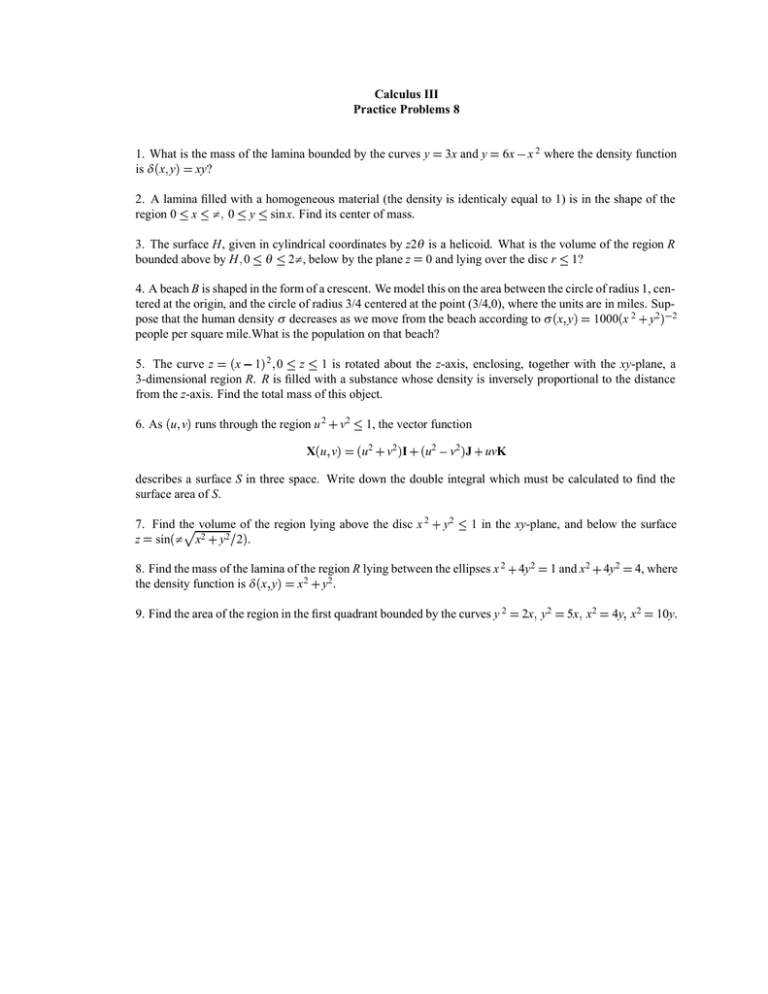
Calculus III Practice Problems 8 1. What is the mass of the lamina bounded by the curves y is δ x y xy? 3x and y 6x x 2 where the density function 2. A lamina filled with a homogeneous material (the density is identicaly equal to 1) is in the shape of the region 0 x π 0 y sin x. Find its center of mass. 3. The surface H, given in cylindrical coordinates by z2θ is a helicoid. What is the volume of the region R bounded above by H 0 θ 2π , below by the plane z 0 and lying over the disc r 1? 4. A beach B is shaped in the form of a crescent. We model this on the area between the circle of radius 1, centered at the origin, and the circle of radius 3/4 centered at the point (3/4,0), where the units are in miles. Sup pose that the human density σ decreases as we move from the beach according to σ x y 1000 x 2 y2 2 people per square mile.What is the population on that beach? x 1 2 0 z 1 is rotated about the z-axis, enclosing, together with the xy-plane, a 5. The curve z 3-dimensional region R. R is filled with a substance whose density is inversely proportional to the distance from the z-axis. Find the total mass of this object. 6. As u v runs through the region u 2 v2 X u v 1, the vector function u 2 v2 I u2 v2 J uvK describes a surface S in three space. Write down the double integral which must be calculated to find the surface area of S. 7. Find the volume of the region lying above the disc x 2 y2 z sin π x2 y2 2 . 1 in the xy-plane, and below the surface 8. Find the mass of the lamina of the region R lying between the ellipses x 2 4y2 the density function is δ x y x 2 y2 . 9. Find the area of the region in the first quadrant bounded by the curves y 2 1 and x2 4y2 2x y2 5x x2 4, where 4y x2 10y.
